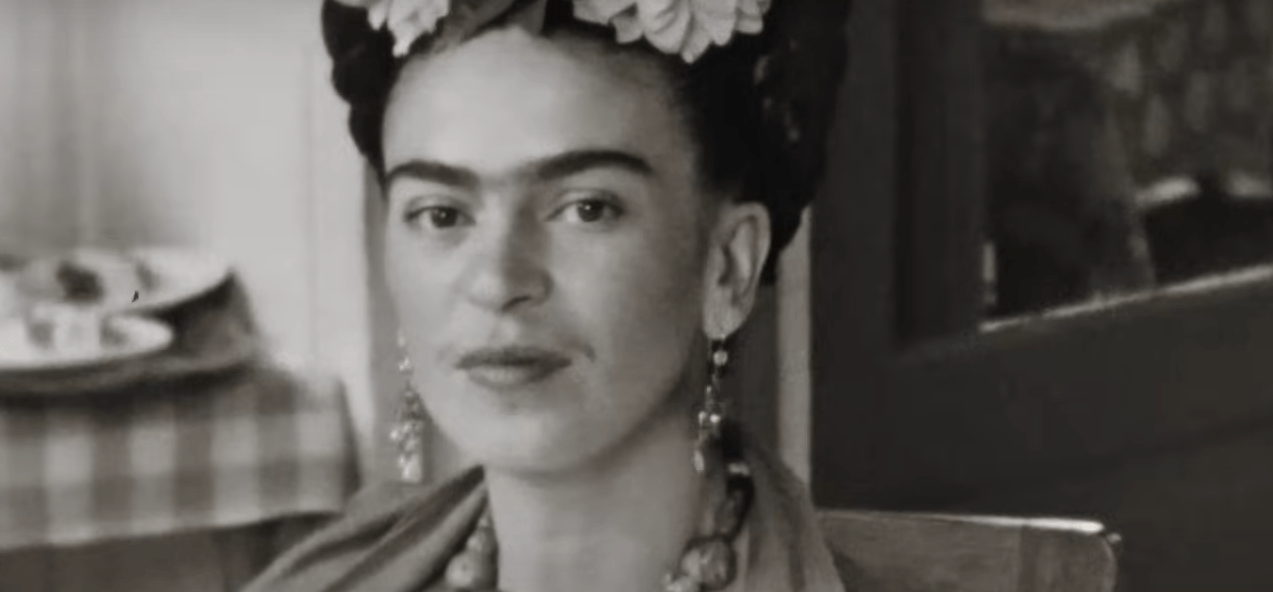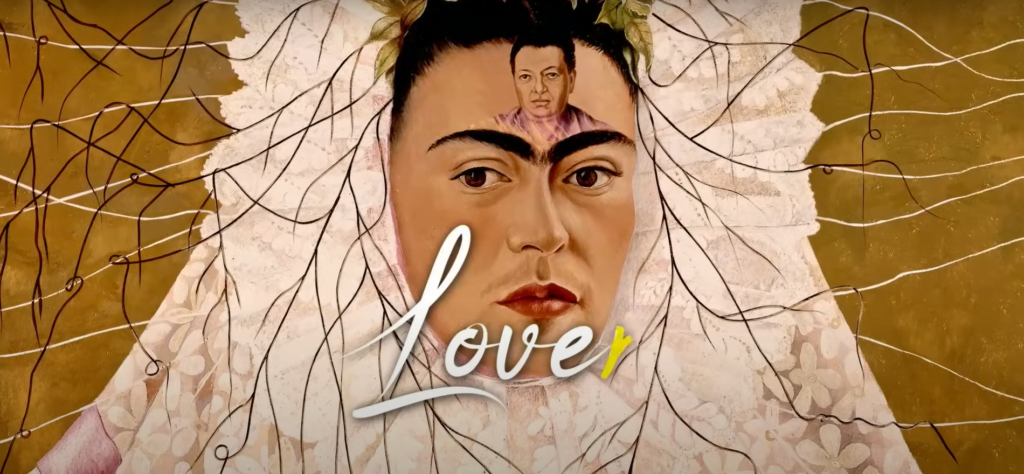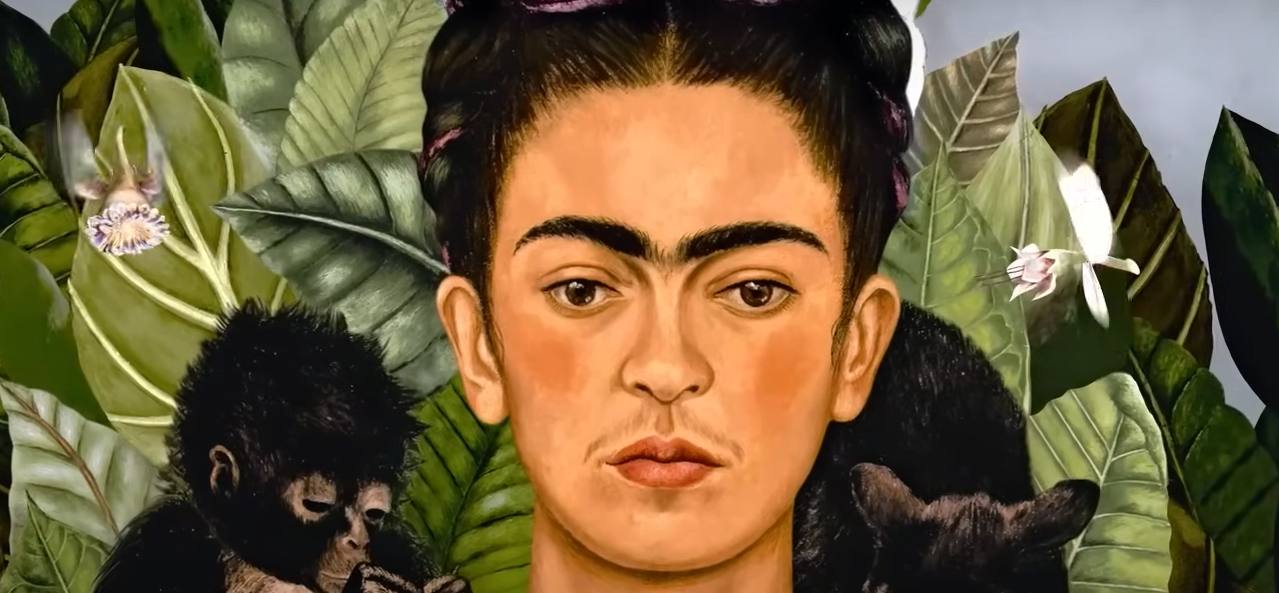What can one say about Frida Kahlo that hasn’t already been said? The icon of Frida Kahlo has for decades now stood for artistic brilliance, closely intertwined with her fearlessness in the face of illness. Yet, the kind of surrealism that Frida channels in her art is akin to a gift that keeps on giving: her art continues to evolve even today, both in the sense of meaning and the emotional archive it produces so that she continues to mystify artists in different fields, including in this case debut director Carla Gutierrez.
Unlike the films previously made on Frida – and one is made every few years, the last ones being Frida Kahlo and Exhibition on Screen: Frida Kahlo, both in 2020, and one of the most memorable ones being Frida played by Salma Hayek in 2002 – this documentary retraces her life, but solely through her diaries, photographs and videos.
No one is playing the titular Frida in this film; in fact, it’s almost as if Frida Kahlo is playing herself. Her story is told through a visual archive of the artist, both in the form of old, mostly black and white photos and some videos of her and those around her and her voiceover (Fernanda Echevarria del Rivero) consisting mainly of writing and art from her illustrated journals, scored to background music that can only rightly be called alive (Victor Hernandez and Stumpfhauser).
Beautiful photographs from different times in Frida’s life morph into beautiful paintings from those times. If one remembers, Kahlo used to paint a lot of self-portraits – a style begun at a time when that was the only way she could paint that she carried with her through her life.
This is interspersed with the paintings she made at different times in her life. Photographic beauty on screen breaks into art that Gutierrez, along with her art directors Renata Galindo and Sofia Ines Cazares, chooses to animate. Beautiful photographs from different times in Frida’s life morph into beautiful paintings from those times. If one remembers, Kahlo used to paint a lot of self-portraits – a style begun at a time when that was the only way she could paint that she carried with her through her life.
Gutierrez in explaining her decision to animate the paintings spoke about how Frida’s paintings often felt very personal to her: she gets really intimate and personal with her emotions. So much so that when I see her paintings, I get intimate and personal with my own feelings. That painting of hers, cutting her hair after a heartbreak, I’ve been there.
Despite being surreal in style, her paintings had the quality of seeming very real. Gutierrez animates the paintings, making Frida’s eyes speak in all of them. It’s as if the paintings speak for themselves, just as Frida is speaking for herself, in this film.
The pursuit of pleasure
Born to a photographer father, and a mother who she describes as an obsessively religious person, Frida wanted to be a doctor as a child. Her mother’s devoutness never convinced Frida. Her father’s photography studio, on the other hand, fascinated her. She describes him as a reader and a painter too. Frida went everywhere with him. He made Frida see the world for what it was: everything was mysterious and held secrets, and she wanted to decipher this world.

In school, she was seen hanging out more with the rebellious young men than with the girls, because she was often thought of as strange. Part of it seemed to be the way she dressed and looked, and another part for the company she kept. She wrote a lot about appreciating pleasure – I think that everything that gives pleasure is good, she wrote. Later in the film, Gutierrez also talks about writings where Frida identifies the necessity of physical pleasures in human lives.
But for Frida, purely physical pleasure was not confined to sexual indulgences alone; she had a queerer view of it. Painting was a kind of sensual pleasure for her. At the age of eighteen, Frida had an accident due to which her body was left in a body cast for seemingly endless days, the accident whose memory is frequently evoked when one is talking of her art, or talking more generally about what makes an artist. Confined to her room, her mother set up a drawing board for her across her bed and put a mirror above it. That was the beginning of Frida’s style of self-portraiture that would come to anoint her work for the majority of her career.
A picture of the times
When Frida entered the world of illness, she was confronted with the socio-cultural perceptions often attached to disability. She wrote about feeling confined to a world of pain, reflecting upon the ableist structuring of the world around her. “Everyone tells me not to despair, but no one knows what it’s like for me having been free in the streets all my life.” It was not easy to transcend the meanings socially attached to illness and disability which often places responsibility on the disabled person to normalise her situation, without any structures enabling discourse around it (Susan Sontag, Illness as Metaphor. 1978). She used adjectives like trapped and alone to describe her situation, mirroring the loneliness of it.

Slowly, even though she was still weak, in light of the social and political changes happening around her, she wanted to be useful, and so part of her life in her 20s and 30s was dedicated to supporting the Mexican ideal of coraje (turning violent to confront injustice). Her journals talk about her involvement with the Communist Party in Mexico which was aiding the peasant revolution, and very soon the cultural atmosphere, her art included, started reflecting the evolving political values.
Painter Diego Rivera was one of the big loves of her life, although in keeping with her pursuit of pleasure, she had numerous romances with many men and women throughout her life. The chronicling of her romantic life by Gutierrez can provide a picture of the cultural politics of her times, through her relations with several artists. That Kahlo has been considered a queer icon is not news, even as the film provides a glimpse into her own very personal accounts of some of these whirlwind romances.
Frida’s artwork
A lot of the art that she created during her life was at very difficult moments, or in the throes of her numerous romances. She started creating art when she first had her accident at 18, and subsequently when Diego was at the peak of his career and they were at the peak of their romance. She created art when she lost her baby after a complicated pregnancy, and again, when back in Mexico, Frida began a series of affairs starting from Leon Trotsky to Georgia O’Keeffe, from Jacqueline Lamba to Josep Bartoli.

She painted a lot towards the end of her life when she was confined to her bed again because of the long-lasting impact of her accident. She had already divorced Diego; they had become distant when he had an affair with her sister, his only affair that ever got to her. In their time apart, Kahlo rediscovered herself as a commercially successful painter. She was soon discovered by Andre Breton who urged her to exhibit her paintings in Paris and New York. Some of these exhibitions described her art as having the playfulness of an ‘unsentimental child.’
In Paris, however, she didn’t sell much of her work, and she lamented the dualities of the art world, questioning the meaning of praise when there was no material compensation for it from the admirers of her work.
Gutierrez draws the film to a close by looking at Frida’s last years when she reframed her life according to her evolving political stance. She got back with Diego but designed a different kind of marriage from the one she’d previously had with him, and the ones that were common in those times. They had a few very satisfying years until Frida fell very ill and had to be admitted to the hospital. In true Frida style, she found her way to laughter and art even there. Her friends spoke about how she often made light of her situation, finding a joke on the bleakest days.
There were periods when even painting couldn’t help her, but she eventually found her way back to the easel, to the sensual pleasure of painting. At her first and last exhibition in Mexico, she arrived on a stretcher and silently watched everyone admiring her work. She later wrote: I must face the bitter fact that having many lives would still not be enough for me to paint everything I want, paying homage ultimately to the painter in her, the one adorning your street walls and drawing rooms, building facades and wallpapers, so popular, yet still an intrigue to artists everywhere.
About the author(s)
Himalika is slowly beginning to get the hang of being an adult, despite being a bad cook. She will take most things with a sense of humour and is constantly striving to infuse feminist practices in her research.




